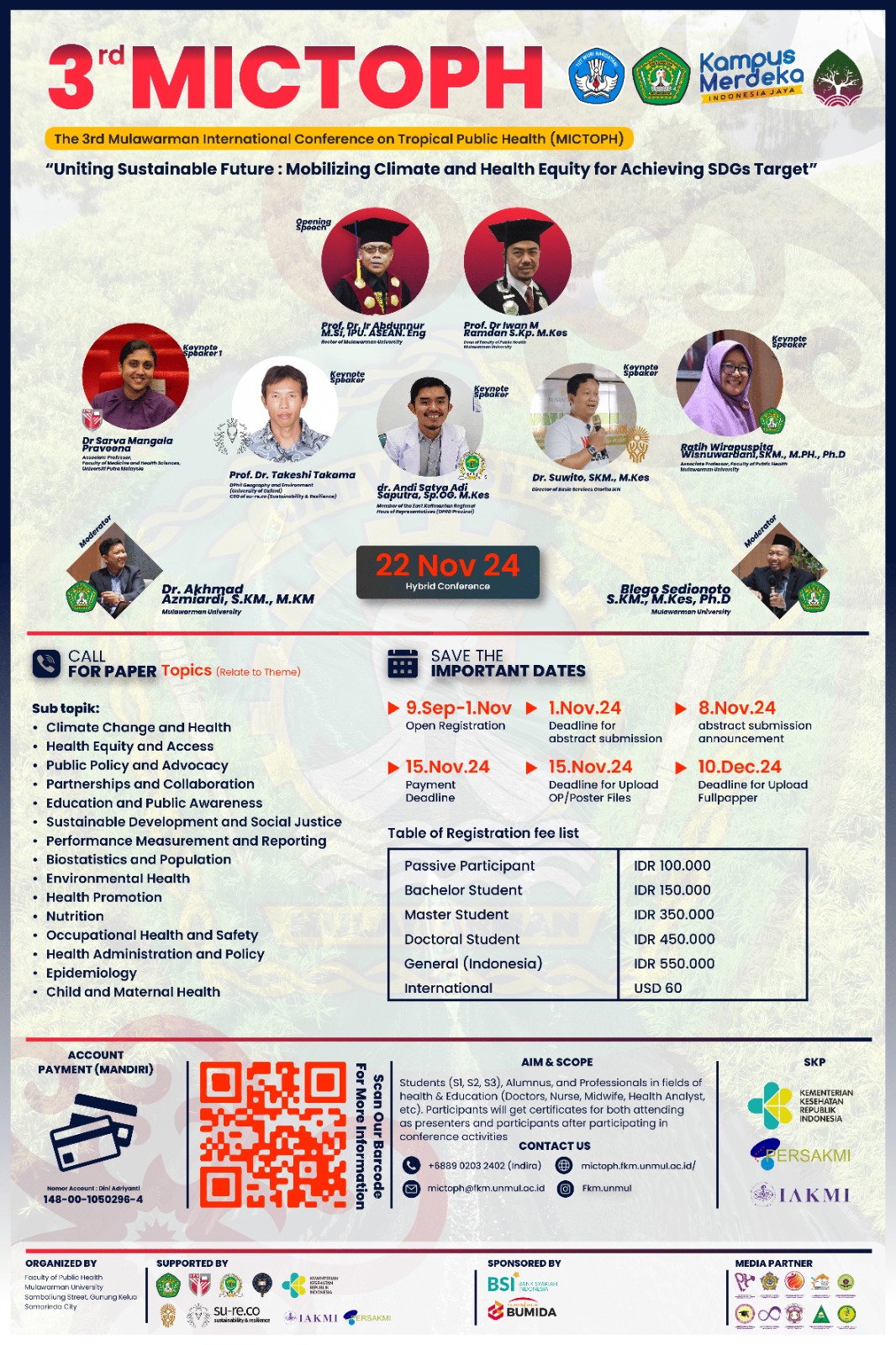Relationship between Fluid Intake and Socioeconomics on the Nutritional Status of Extracurricular Sports and Non-Sports Students at SMA 1 Samarinda
Keywords:
Nutritional Status, Fluid Intake, Socioeconomics, Students, SamarindaAbstract
Active Indonesian teens often lack adequate hydration, especially those from low-income families. This study at SMAN 1 Samarinda examines fluid intake, socioeconomic factors, and nutritional status of students to improve their health through better nutrition and hydration. The general objective of this study was to analyze the relationship between fluid intake variables and socioeconomic status with nutritional status in extracurricular sports and non-sports students at SMAN 1 Samarinda. This research was conducted on October 23, 2024, at SMAN 1 Samarinda, involving 50 extracurricular sports and non-sports students. Using a cross-sectional, quantitative design with a chisquare test, the study aimed to analyze the relationship between fluid intake, socioeconomic status, and students' nutritional status. Data was collected at a specific time through observation and interviews The results showed no BMI difference between sports and non-sports students, indicating similar nutritional status in both groups. However, fluid intake was higher among sports students. Socioeconomic factors (parental education, occupation, income, and allowances) did not affect nutritional status in either group. Statistical tests confirmed no link between fluid intake and nutritional status (p=0.849 > 0.05), consistent with research showing hydration doesn’t directly impact nutrition. Additionally, socioeconomic factors showed no significant impact (p>0.05). This study found there is no relation between fluid intake and students' nutritional status (p=0.849 > 0.05), Socioeconomic factors also showed no significant effect (p>0.05), suggesting nutritional status is more influenced by diet, education, and access to nutritious foods. Future studies could add physical activity questions to better assess nutritional differences between sports and non-sports students.





